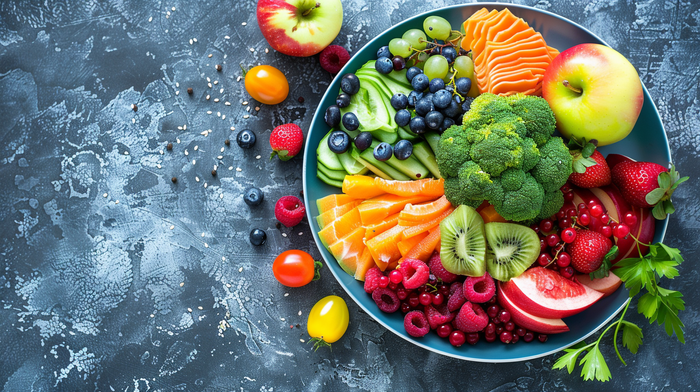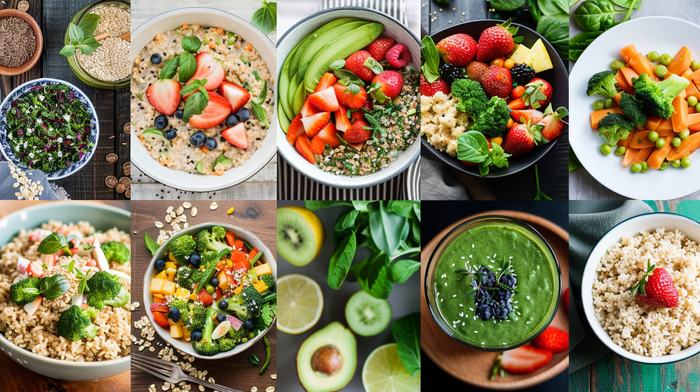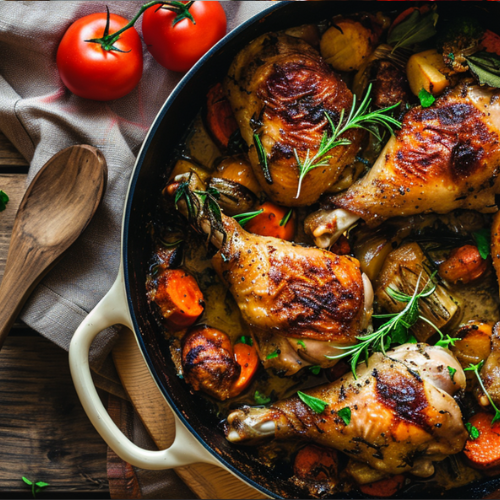How to arrange a diet rich in fiber to aid weight loss?

Nowadays, more and more people are looking for effective ways to lose weight. One of the key elements of any weight loss diet is fiber - an extremely important ingredient that can speed up the weight loss process and improve overall health. In this article, we'll look at how to put together a fiber-rich diet that will help you achieve the figure of your dreams.
What is fiber and why is it important?
Fiber is a type of carbohydrate that our body cannot digest. However, it plays a very important role in our digestive system, supporting digestion and regulating blood sugar levels. Thanks to its ability to absorb water, fiber makes us feel full longer, which can reduce excessive snacking and make it easier to control weight.
Dietary sources of fiber

There are many natural sources of fiber that you can include in your diet. Among the richest are vegetables (especially those with dark green leaves), fruits (especially those with skins), whole grains, nuts, seeds and legumes. Incorporating these foods into your daily menu will not only enrich your diet with fiber, but also provide many other essential nutrients.
How to arrange a diet rich in fiber?
Planning a fiber-rich diet doesn't have to be difficult. The key is to introduce variety and make sure each meal contains at least one fiber-rich product. Here are some practical tips on how to do it:
- Start the day with a breakfast containing whole grains, such as oatmeal, whole wheat bread or muesli.
- Add more vegetables to your meals; both raw and cooked. Salads, casseroles and even smoothies are a great way to increase your fiber intake.
- Choose fruits as snacks between meals - they are not only healthy, but also rich in fiber.
- Replace white grain products with their whole-grain counterparts. For example, choose whole-grain pasta, brown rice or bread.
- Introduce more legumes into your diet, such as beans, lentils and chickpeas. They are not only a source of fiber, but also protein.
Health benefits of a diet rich in fiber
A diet rich in fiber has many health benefits. First, it can contribute to weight loss, as fiber-rich foods give a longer feeling of satiety. Second, fiber helps the digestive system, preventing constipation and improving overall intestinal health. In addition, regular consumption of fiber can lower the risk of developing heart disease, type 2 diabetes and some types of cancer.
Example of a fiber-rich menu
To help you get started, we have prepared a sample fiber-rich menu. Keep in mind that this is only a suggestion, which you can freely modify to suit your taste preferences and needs.
- Breakfast: a bowl of oatmeal on water with fresh fruit (e.g. berries, strawberries) and a handful of nuts.
- Second breakfast: a sandwich of whole-grain bread with avocado and tomato slices.
- Lunch: Brown rice with skillet vegetables (e.g., broccoli, carrots, red peppers) and grilled chicken.
- Afternoon: Smoothie of green vegetables (spinach, kale) with a banana and a few tablespoons of chia seeds.
- Dinner: salad with lamb's lettuce, grilled salmon, orange, nuts and olive oil-based dressing.
Summary
A diet rich in fiber is not only an effective tool for weight loss, but also a way to improve overall health. Incorporating a variety of fiber sources into your menu, such as vegetables, fruits, whole grains, nuts, seeds and legumes, will help you enjoy tasty yet healthy meals. Remember that variety and moderation are key, so experiment with different ingredients to find your favorite flavor combinations that will support your health and weight loss goals.





